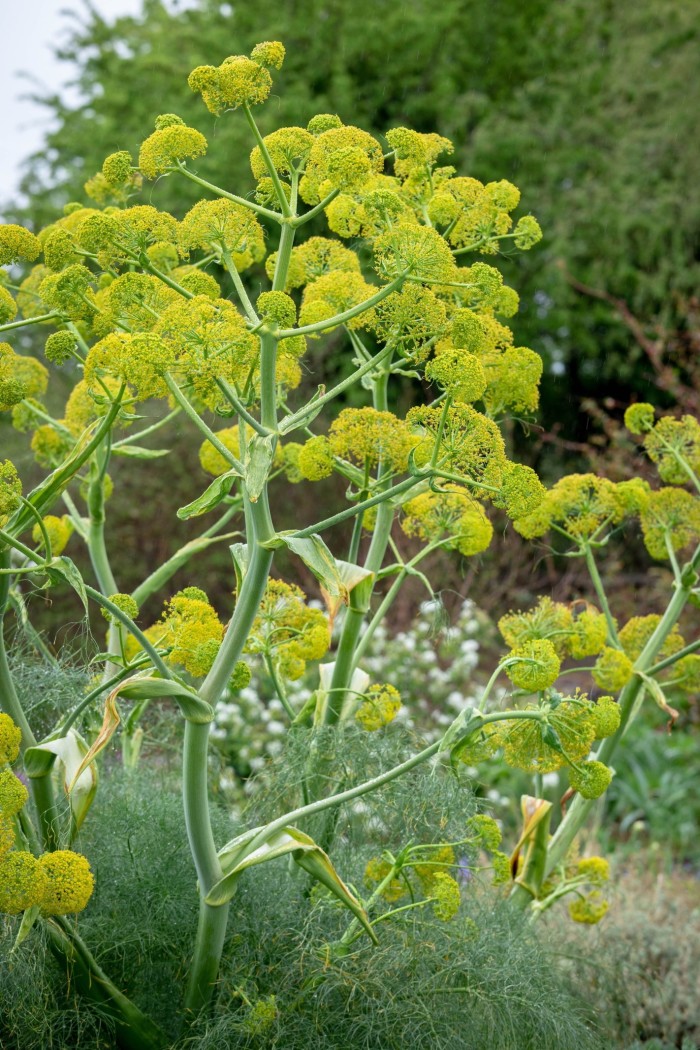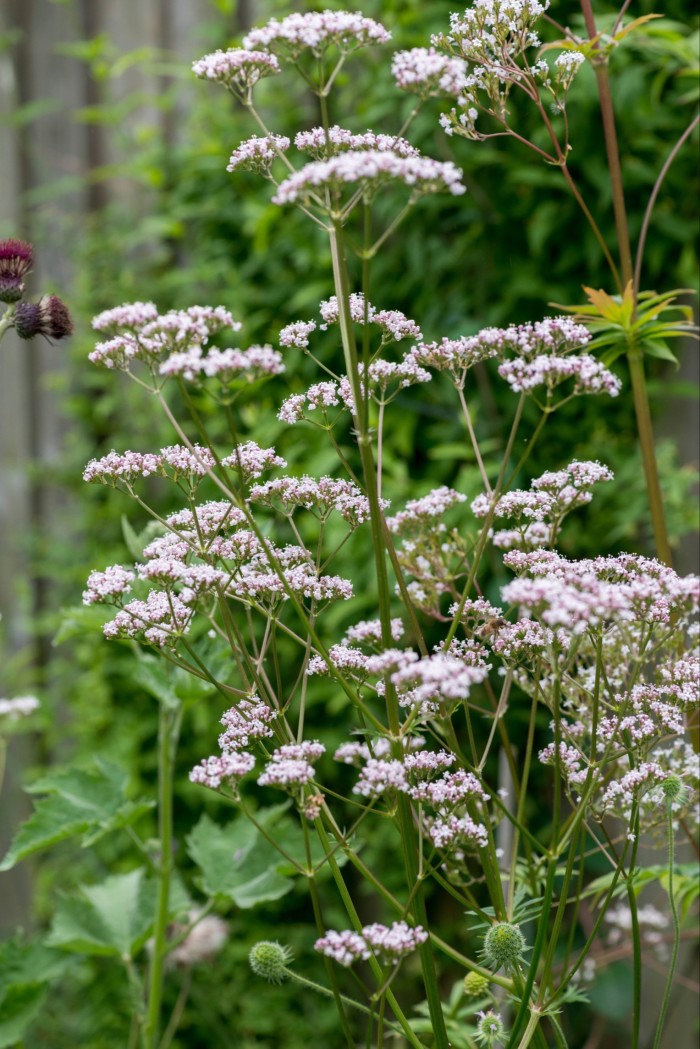
Unlock the Editor’s Digest for free
Roula Khalaf, Editor of the FT, selects her favourite stories in this weekly newsletter.
What an amazing year for British gardeners. I know I keep on saying so but the year keeps on delivering. In this green and still-pleasant land, citizens of somewhere rural have had a month of heaven. Nature’s colour green has regained its vibrancy without the long dry spells which scorched grass in previous Mays and Junes. Meadows and roadsides have looked gorgeous. Flowering plants are in great form. Helped by intermittent rain, free- seeding ones are coming up prolifically. Before I centre on the free-seeders, culminating in an unexpected use of them, I cannot let the flowerers pass.
Some of them are weeks ahead of their usual selves. Buddleias have opened their flowers in my garden in the third week in June. About two months early, blue agapanthus are showing colour in their buds. At the same time, border phloxes have kept to their usual schedule and white anemones are patiently waiting till autumn. The seasonal muddle must be even more pronounced in London but I do not want to leave verges of fresh cow parsley and views of green woodland in order to inspect it.
A wet, accelerated spring has led to seedlings, including weeds, everywhere. It is so different to the Mediterranean and the bouts of fiery heat that have already hit it hard. After a mild winter, forget-me-nots and primroses turned up all over gardens, a fine sight in early April but needing to be curbed thereafter. I never forget to root up forget-me-nots as they seed very quickly after flowering. Only a few need to be forgotten till next year. (I overlooked some in a newly cleared bed, opened up to a bare surface. Hundreds of forget-me-not seedlings have germinated, ready to smother the young Afro-French marigolds I have planted there.)
The line between welcome free-seeders and unwelcome weeds is a fine one. In the evenings I prowl round the garden with the aim of spotting a particular brand of outright weed and then removing it. If I concentrate on one only, I am more likely to eliminate it. Last night the target was slender willowherb with those insipid pink-white little flowers on stems which are delightfully easy to extract. Tomorrow the target will be docks and their more obdurate roots. Why pull them out when I leave other free-seeders, including many campanulas?


Among the rhetoric around wilding, the question needs regular answering. One reason for declaring these plants to be weeds is aesthetic. The willowherb adds nothing to matched groupings of plants with shape and colour. Nor do the rusty flowers of docks. Another is cultivational. They compete with biodiverse neighbours, deprive them of water and limit their access to light. Docks are food plants for fifty shades of moth, so I leave a few docks in boundary hedges or by my rubbish heap. However, there is no national shortage of them. They proliferate in hedges and on rough urban spaces. Moths are not starving.
So, out these plants all come, whereas my favourite free-seeders do not, partly because they flower beautifully, partly because they behave better. My favourites are bell-flowered campanulas. Campanula persicifolia, the peach-leaved campanula, seeds all over the garden and I live happily with it except when it emerges in carpets of special alpine plants. I also live with self-seeded yellow verbascums, even the common mullein with a long tap root: I cut them down to ground level as soon as the flowers blacken on their tall stems. Meadow geraniums are welcome too but as their roots spread more widely from a central tap root, they need limiting. Every garden has its self-seeding bits of luck. In mine, lemon yellow Potentilla recta matches self-seeded lemon yellow Hypericum olympicum citrinum. Dieramas, or angel’s fishing rods, seed too, welcome returnees after winter 2022-23 decimated them.
I am wary of two popular seeders, too prolific for my garden. Each has good relatives, differently named, which need knowing. One is fennel, the other valerian.
Most of the fennel in gardens is free-seeding Foeniculum vulgare with flat heads of yellowish flowers. It is often planted in patches of herbs, but then ends up everywhere. Far better is the true fennel of ancient Greek mythology, Ferula communis, whose stems held the fire stolen by Prometheus: they were also waved by the god Dionysus’s bacchanals when out of their minds. Ferula is the finest fennel to grow, but only where you can accommodate huge stems of flower up to seven feet high in May and the yellowing of its feathery leaves as they disappear from late June onwards.
Most of the valerian in gardens is free-seeding centranthus, pseudo- valerian which is at its best on limestone slopes above the cuttings for railway lines. In gardens it seeds in gravel, into walls and wherever you would never think of planting it. The flowers vary from a fine deep red to a less fine rosy pink: the white form is especially lovely. True valerian is Valeriana, a different family, many of which are excellent plants. I am a fan of pink-white Valeriana officinalis, usefully tall when in flower in May and lovely thereafter when its heads go a pale pinky-buff for weeks on end.
I have just seen these two free-seeders in unexpected magnificence. In county Clare in west Ireland, big signs proclaim Trump International Golf Links and Hotel at Doonbeg beside the sea. What a flat and externally godforsaken 400 acres of land, abutting, however, a fine beach. Its website’s pictures show riders galloping down the sand. They set my sporting blood racing, so I must own up. I deviated with friends to check the place out.
Trump himself has stood back from this venture. In 2016 he called it “perfecto” but also “small potatoes”. There are no potatoes growing in its Irish landscape. The driving force is the hotel golf course, served by bevies of golf carts for visitors to the links houses: in high season the costs are teed up to the nines. I am no golfer. My interest is the garden round the Trump buildings.
The buildings are ugly, but the gardening is not. On sloping beds I found the two free-seeding invaders: common fennel and tumbling pseudo-valerian. Among excellent blue shrubby salvia, a designer had grouped billowing clumps of green foeniculum beside clumps of the bronze one. Beside them the flowers of the pseudo-valerians were selected to be a deep red. I admired the grouping so much that I took the chance to rip off Trump and pinch a cutting off the links’ best osteospermum nearby, a blonde yellow one at ground level. I do not know its name but, given its vigour, I will label it Stormy.
I applaud Trump International’s gardeners: they have used and contained these self-seeders so well. Do not worry. My fennel-leaved favourite for bedding out is still Bidens, reliable in all weathers: currently I put an apostrophe before its “s”. I will not be imitating Trump International’s ultimate show-off, big lettering spelling “TRUMP” as if in clipped green box-bushes beside the putting course. I had hoped that box moth would ruin it, but it will not, nor will any self seeder. The lettering is made in a box-bush lookalike: fake green plastic.
Find out about our latest stories first — follow @FTProperty on X or @ft_houseandhome on Instagram